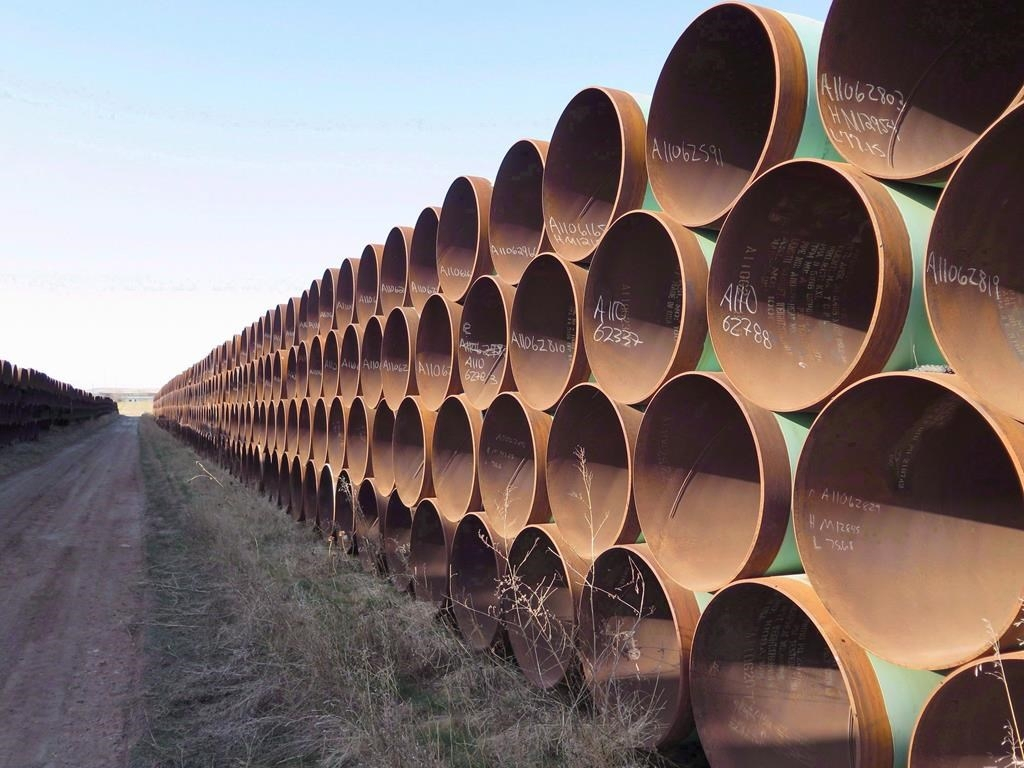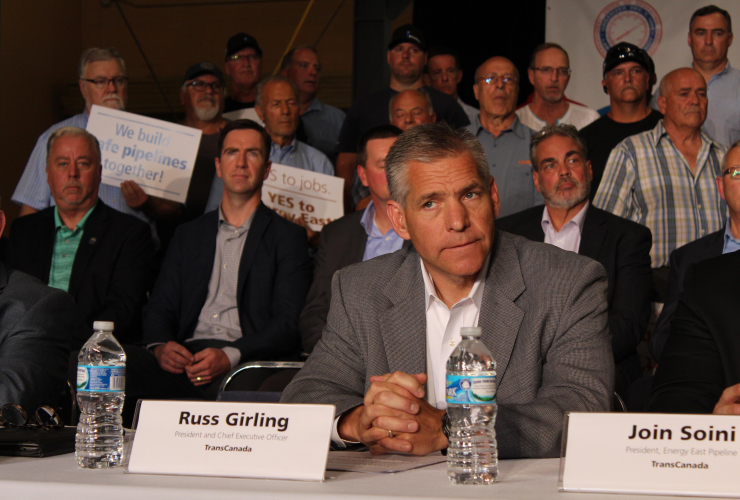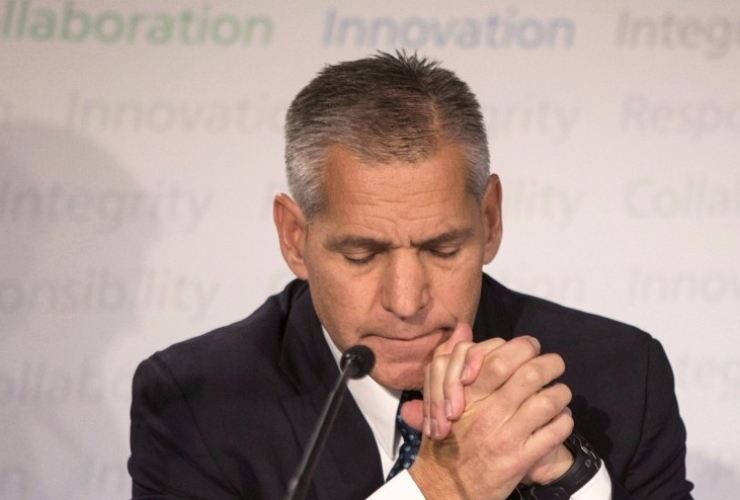TransCanada shut down part of its Keystone pipeline after an oil leak of about 5,000 barrels (about 795,000 litres) Thursday in Marshall County, South Dakota.
The pipeline from Hardisty, Alberta to Cushing, Oklahoma and to Wood River/Patoka, Illinois “is expected to remain shut down as we respond to this incident,” the Calgary-based company said in a statement.
The leak occurred just a few days before the Nebraska Public Service Commission is scheduled to make a Nov. 20th announcement of its decision on whether to approve a permit to allow construction of the controversial long-delayed Keystone XL pipeline.
Image of Amherst incident taken earlier today by aerial patrol as part of our initial response. For more updates, visit https://t.co/8yWI1Oq2EM pic.twitter.com/uRNtYUdVjL
— TC Energy (@TCEnergy) November 16, 2017
The leak was detected after a drop in pressure in the operating system. The section of pipe along a right-of-way approximately 56 kilometres south of the Ludden pump station in Marshall County, South Dakota was completely isolated within 15 minutes and emergency response procedures were activated, it said.
“Crews, including TransCanada specialists from emergency management, engineering, environmental management and safety as well as contracted, nationally-recognized experts are assessing the situation,” the company said.
The shutdown did not affect the Marketlink pipeline system, which uses the facilities of the southern leg of the Keystone system from Cushing to the Gulf Coast.
This is the second significant leak on Keystone over the past two years. In April 2016, TransCanada shut down the pipeline after a local resident reported seeing oil seeping to the surface in South Dakota.
The line is less than 10 years old and began commercial operations in June 2010.
The Keystone XL pipeline got federal U.S. approval in March when President Donald Trump overturned former President Barack Obama's rejection of the project in 2015. It already had been approved by most of the states along the route. Nebraska was the last hurdle.
In Canada, TransCanada reported 21 incidents during the first year of operation, mainly small quantities of oil being spilled near pump stations and later cleaned up.
In the U.S., the federal watchdog for the industry - the Pipeline and Hazardous Materials Safety Administration - alleged that the company had failed to operate Keystone safely after identifying 62 probable deficiencies on the pipeline, including "multiple anomalies" near St-Louis, Missouri.
This leak is what's now
This leak is what's now regularly expected from "state of the art leak detection systems," … that, "can be shut down in a matter of minutes", (15 minutes or so?, 17 hours or …? 5 days, or ?). These leaks have become Standard Operating Procedures, and unfortunately, aren't exclusive to any one pipeline company.
Courtesy of the same inept company that wanted to ram Energy East across Canada's most vulnerable water resources and ecosystems, this leak occurred in an only 10 year old pipeline.
It's an inexplicable horror that the National Energy Board (NEB) continues to allow two aged oil pipelines to carry product across much of Southern Ontario and Quebec, despite their outstanding work orders, orders to reduce their operating pressures, leaks, unremediated contamination, and unpaid landowner compensation.
Enbridge's line 9 is over 50 years old and requires hundreds of annual repairs to cracks, dents and corrosion of its pipeline. Despite its badly deteriorating condition, the NEB approved reversal of its eastern section in 2014, with 30 conditions.
Trans Northern's pipeline is over 60 years old, and has numerous unremediated leaks across Ontario and Quebec. Trans Northern appears to make reactive repairs, only after leaks occur. Two NEB board members wanted this pipeline shut down, but were outvoted by other board members. In 2010, Bronte Creek was seriously contaminated by a Trans Northern leak (discovered by a third party), reportedly requiring over $23 Million of remediation. The company didn't know their pipeline was leaking, and the source wasn't determined until 5 DAYS after reported.
If it took 15 minutes to shut down a leaking 10 year old pipeline, and it took 17 hours to shut down Enbridge's leaking line 6B, (near Marshall, Michigan and the Kalamazoo River), approximately the same age as their line 9B in Ontario, and 5 days to find the Bronte Creek leak source, then how long do you think it would take to shut down either of the aged Enbridge line 9B or Trans Northern's pipeline?
It's inevitable - not IF it will happen, but WHEN it will happen?
Indeed, an excellent time to wean off fossil fuels and convert to sustainable, climate-saving renewable energy.





Comments